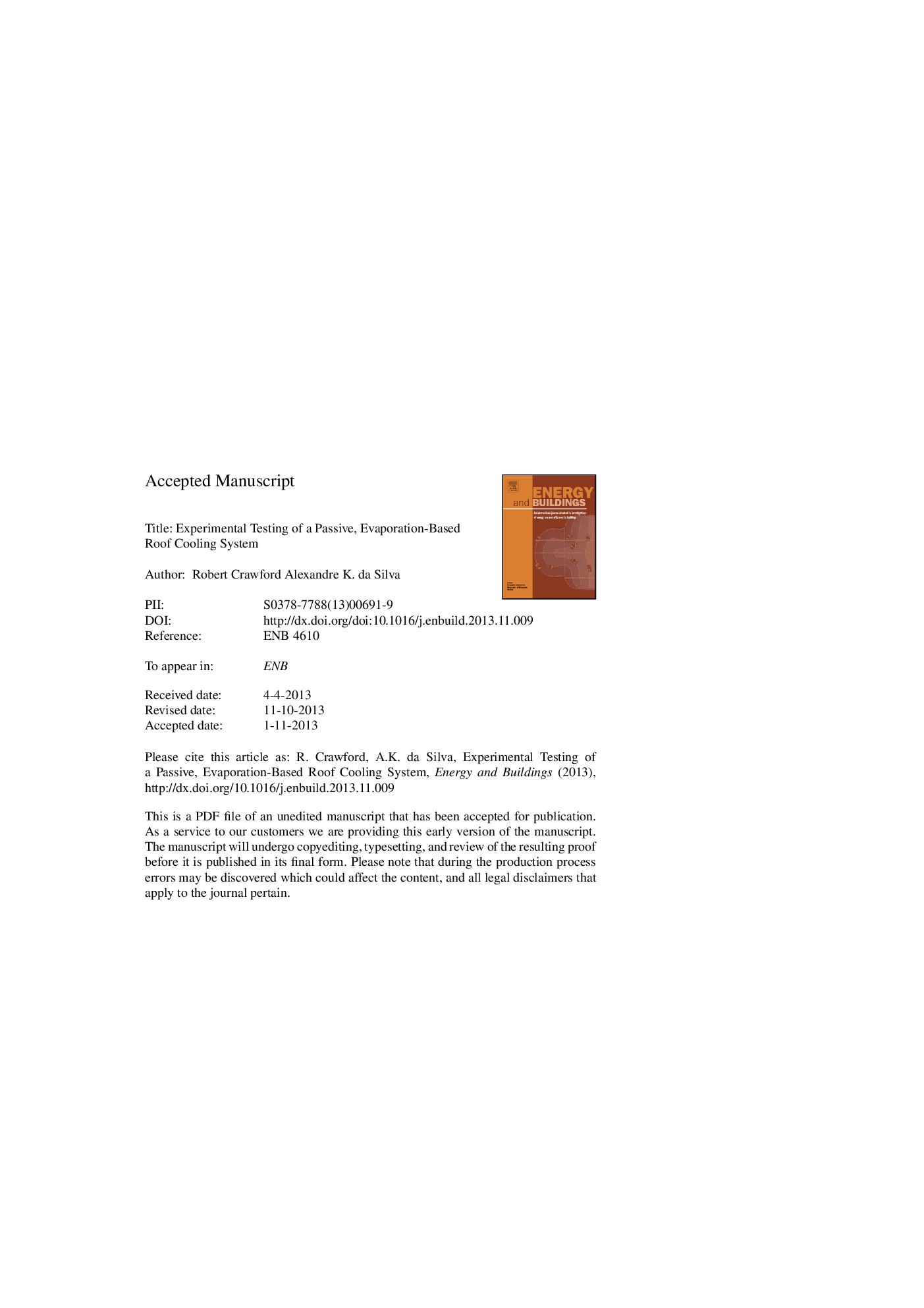| Article ID | Journal | Published Year | Pages | File Type |
|---|---|---|---|---|
| 6734039 | Energy and Buildings | 2014 | 32 Pages |
Abstract
In this paper, we study the capability of a roof based, passive, evaporative pumping system to lessen thermal loadings imposed on the interior of a building thus reducing air conditioning energy consumption. To do so, an instrumented experimental setup was constructed wherein a porous membrane rested on top of an air cooled copper plate while heated by a halogen lamp from above. From the membrane, water evaporated while drawing replenishment from a separated reservoir. The tests aimed to determine the ability of such a system to lessen roof temperatures and heat fluxes into the building compared to traditional (e.g., dark ethylene propylene diene monomer (EPDM)) and non-traditional roofs (e.g., white). The results indicated that the evaporation system considered kept the plate temperature of the test section considerably lower than competing options, for a typical summer day in Austin, TX. Additionally, with the use of reclaimed water in mind, the system's performance was evaluated under membrane fouling conditions, which was shown to affect the evaporation rate of the porous membrane.
Related Topics
Physical Sciences and Engineering
Energy
Renewable Energy, Sustainability and the Environment
Authors
Robert Crawford, Alexandre K. da Silva,
